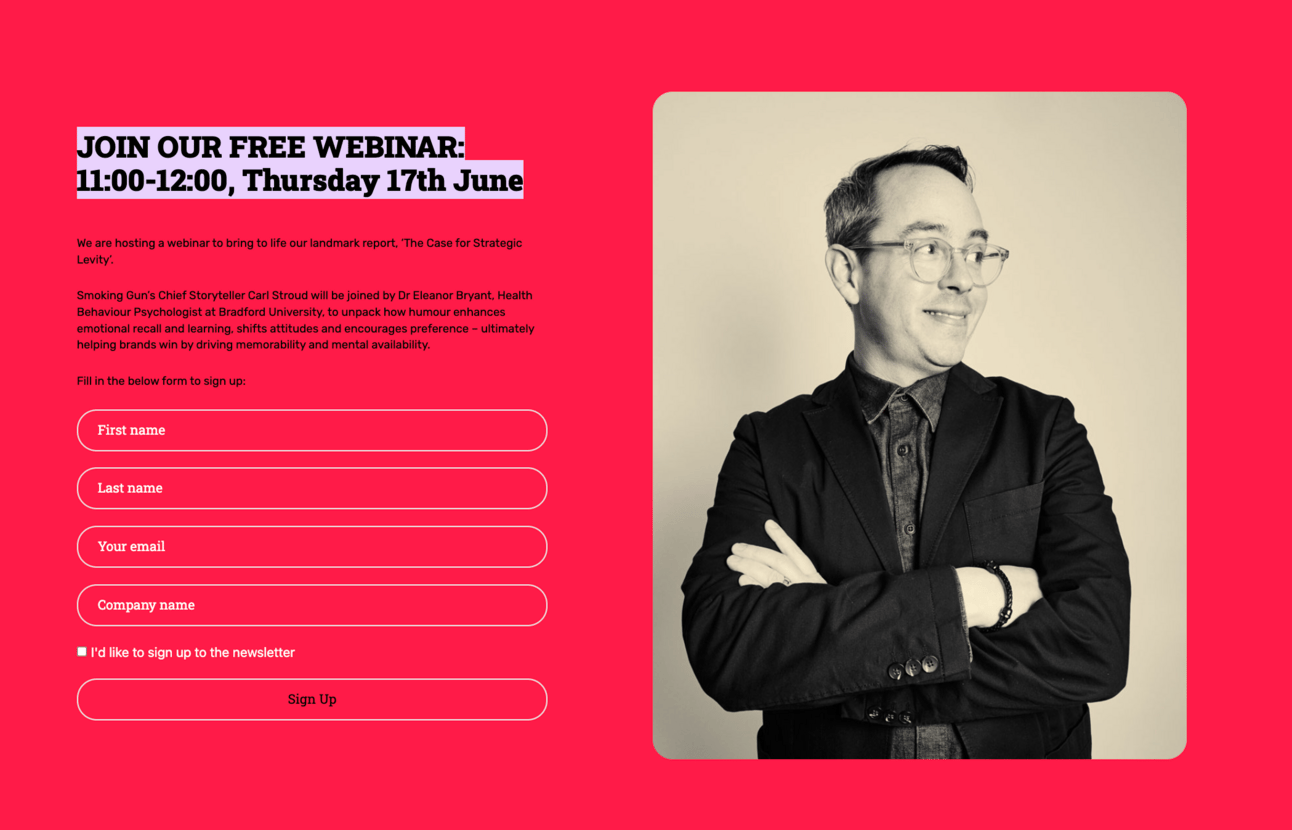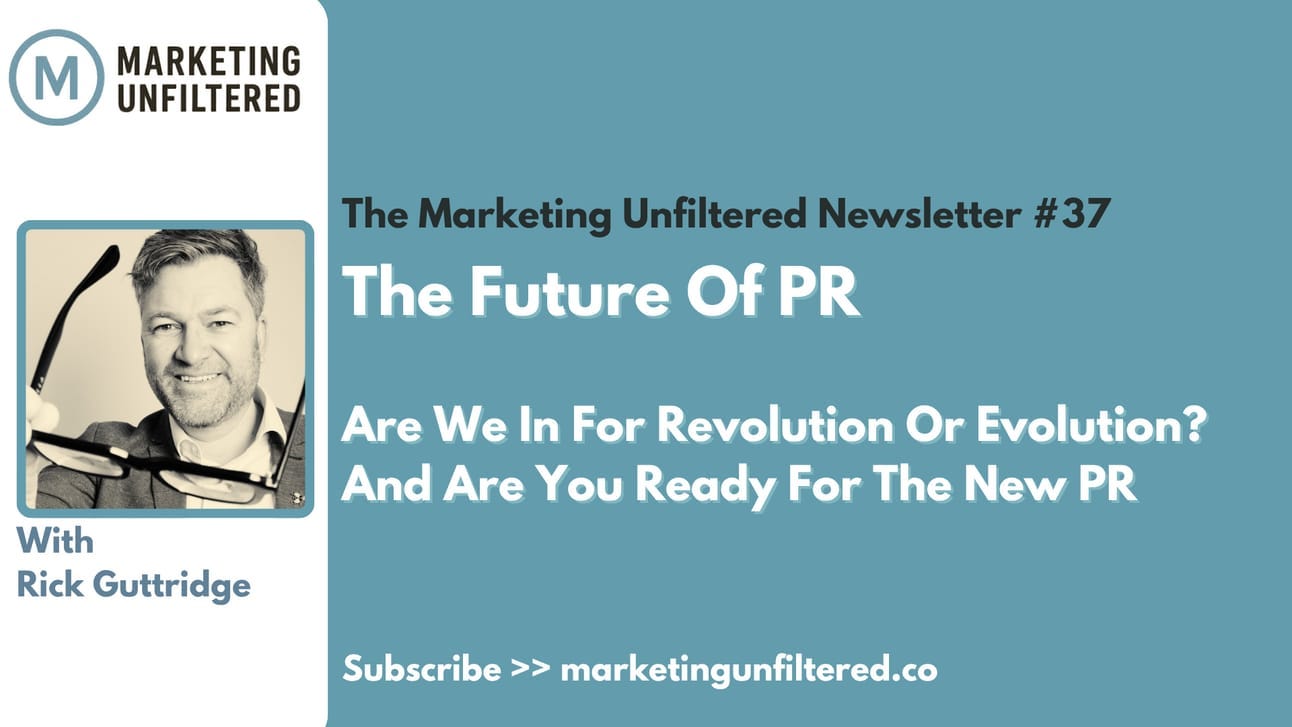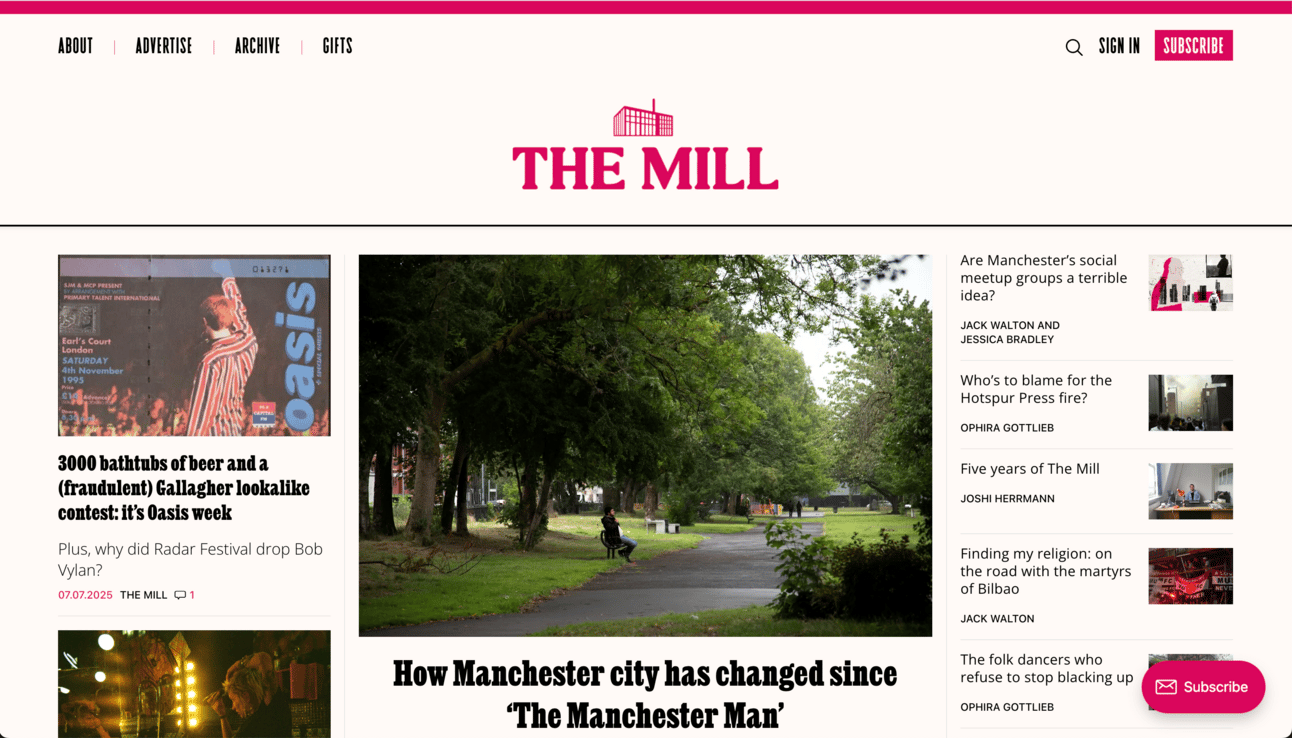The Future Of PR 😳
Marketing Unfiltered 37 - Are We In For Revolution Or Evolution? And Are You Ready To Adapt To The New PR
📝 EDITORS NOTE 📝
Greetings, Marketing Leaders ☀️!
Good Morning, Marketing & Business Leaders, we have a real treat for you this week in the Marketing Unfiltered newsletter. I interviewed Rick Guttridge and his answers will help guide you through the next 18 months as you integrate PR into your long-term marketing plans
We cover:
What is actually changing in PR
What’s staying the same
Where we should be investing our budget and resources for the next 12 months
Why podcasts, video and AI are incredibly important, but strategic principles should stay
Why EGC is going to be a tactic you will want to start really investing in
Why humour is so important in today’s landscape
We need to think about developing brilliant PR into 2026 and 2027.
Thanks for reading again this week and have a great weekend!
Danny Denhard - Lets connect on LinkedIn
PS: Here’s my recommendations on how to win in the one-click AI space
🎟️ OUR PARTNER SMOKING GUN INVITES YOU! 🎟️
The Power Of Humour In Brand Communications Webinar

The What? A dedicated webinar for Marketers wanting to use humour in brand communications. Hosted by Carl Stroud, Chief Storyteller at Smoking Gun, & Dr. Eleanor Bryant, Health Behaviour Psychologist,
Your Why? Carl and Dr Eleanor will explain how humour improves emotional recall, learning, attitudes, and brand preference, ultimately boosting memorability and mental availability for brands.
The When? Thursday, July 17th, from 11:00 to 12:00.
Will Harry and I see you there?
WHAT PR WILL LOOK LIKE OVER THE NEXT 18 MONTHS
The Future Of PR Is Evolving!

1/ How do you see AI transforming the PR industry in the next 3 years?
Let’s get real here. Most are still watching, waiting and dabbling, as the pace of AI products and offerings is changing so fast it’s hard to embed process and test, before the latest shiny new tool is announced. Never mind before companies can actually work out an AI protocol or policy.
The initial hopes of huge productivity gains may have been tempered with the realism that it’s in fact hard (and costly) in practice to scale processes. Added to the fact that currently many solutions such as creative ideation offer reasonable solutions (the average of all the LLMs have learned, and not new thinking) but lack human instinct, empathy and maverickness. `For now at least.
However the martech companies with the big budgets are embedding AI into tools we already know and love - think Adobe, Hubspot, media monitoring sentiment analysis etc to help garner quicker results, insights and reporting. AI was unsurprisingly the hottest topic at this year’s AMEC Global Summit.
Yet there’s an immediate client need to address as Google search volumes get their first major kick in the privates as consumers switch to asking Ai for help. Many studies show that the key sources for training LLM and therefore affecting if your brand will show up as an answer in results is earned media. This is a clear and present opportunity for PR and one we’re actively leading with our clients. And shout out to our mates from Coveragebook who've developed a nifty tool to allow you to see which media titles Google cites as sources when asked a question, therefore allowing PR to target these titles for clients - see https://inthemix.ai/
The ability to quickly process huge volumes of data eg customer, social mentions, reviews etc to benchmark and understand audience feelings, behaviours and actions around brands can springboard faster and better creative communications. Entrusting repeatability, reliability and accuracy in the data and methodology is a barrier.
There are multiple other emerging uses of AI in PR, all of which require careful consideration of ethical and privacy issues. Building agents with audience personas to test comms creative and messaging and likely responses, simulating crisis and effectiveness of comms messaging, enhancing data-led analysis and decision making are just a few. The rise of personalised content is also set to explode.
Practitioners that can build ‘test and learn’ of AI to reduce slow, or intensive processes into their workflows stand a better chance of sustained success and longevity.
But beware a race to the bottom. The latest MIT research suggests that those who use AI too much face cognitive decline, memory issues and loss of ownership of their work.
2/ Public sentiment is being influenced and shifting faster than ever, what are your recommendations for real-time crisis management and protecting brand reputation into 2026?
With mass news media consumption in decline and all social media users caught in echo chambers of the algorithm’s meaning we’re existing in a complex comms world.
Factor in dark social- eg WhatsApp and closed Facebook groups etc added to the rise of social video content, where brands can be discussed for better or worse without any written brand mention and brands can be in a whole heap of trouble and not even realise it.
So keeping on top of your data stack and realtime alerts for sudden rises in brand mentions (text or Audio) and searches is key. A whole host of AI enhanced tools are available to help with this.
I wonder how long until someone cracks a tool to alert of negative LLM brand results in real time too.
Creating centralised monitoring and analysis that can be used cross department e.g. PR, brand, marketing, customer services, sales etc can be an asset to help you win against your competitors.
But be warned of ‘data puke’. Know what you need to measure and how you can stay on top of analysing it. Large scale analysis can be done with LLM BUT ensure prompts are captured and consistent, data stream controlled and DO add human checking too.
Also consider the use of LLM in advance to predict likely issues in advance based on what’s happening in the wider world, your industry and anything you know is going to happen from your business or competitors.
Deep fakes and disinformation is a growing brand threat and policies and procedures to deal with this should now be baked into crisis plans.
3/ Newsletters hold a lot of influence in niche categories, what do you see the role and impact of newsletters having in the next 18 months?

The Mill - a breakout example of how local journalism can work, built originally on Substack and moved to Ghost platform
Newsletter and niche news sites ( see the wonderful The Mill in Manchester as an example) plus WhatsApp groups are all being experimented with by media keen to stop the catastrophic traffic drops caused by recent Google updates, Facebook’s move away from emphasising news in feeds and the changing consumer behaviour to asking AI for answers.
Newsletters allow curious minds to stay ahead in the topics most relevant to them and for savvy brands to build community and advocacy in key areas. The numbers may be small but the power and influence is potentially mighty.
4/ Podcasts have continued to explode, how are you approaching podcasts and what are your recommendations to clients to win with podcasts?
To podcast or not to podcast once was the question.
We always start by asking WHY?
Is the time and effort to produce something of quality worth the effort, to potentially only reach a limited audience. Is a pod the best way to effectively reach your key audiences. Or are you prepared to invest in the media to reach a bigger audience. Or is the podcast actually a trojan horse and a demonstration of knowledge rather than being reach focused.
Often in our strategies, It’s more about how to land brand spokespeople onto relevant pods as guests. Not only to reach highly targeted audiences but increasingly as a valid tactic in training LLM to enhance brand visibility in GPT answers.
Arguably POTUS Trump gained more success in his election push from appearing on high profile pods such as Joe Rogan’s than from mainstream media.
But beware of dangers. Not falling under Ofcom governance there’s an increasing brand risk from appearing on pods who can share misinformation without the same journalistic standards, fairness or perhaps thoroughness we expect from traditional broadcast outlets.
Ex social media agency founder, Dragons Den star turned hugely successful podcaster Steven Bartlett has run into trouble. Both for not disclosing his ownership of advertised products and for sharing potentially damaging medical claims.

Be careful! Two examples of Steven Barlett’s misinformation
The internet is full of enough noise and guff. What I do know is that the world doesn’t need a load more white middle aged men spouting sausage fest opinions.
Adding real value and in a format that is engaging and entertaining are so much more likely to win through.
5/ With the increasing demand for video and podcast content, how is your agency adapting your approach to leverage these richer media formats for client success?
All our client work starts with the INtenin Unit - our strategic consultancy. Understanding the organisational goals were looking to impact through comms, researching and finding the insight that springboard campaigns and then selecting channels and formats.
You’re right that video is increasingly a powerful tool to gain reach and algorithm for favorability in social channels but also deployed across owned channels and when done in a not overtly branded manner a powerful asset to offer as part of earned media outreach too.
Video and subsequent production values and budgets differ hugely. From the rise of in-channel editing and throwaway content on TikTok to high quality multi camera and director set up for macro influencer content, we offer the whole gamut, but again only choose based on the overall strategy and budget.
6/ It feels like we are hitting an inflection point with how companies talk at/to customers, have we moved above the evaluated and overly polished corporate jargon for marketing to customers? Or do you think it’s still required in 2025?
This depends on the brand, the audience and the situation.
But as a general note, as we revealed in our recent white paper the Case For Strategic Levity, consumers are sick and tired of the saturation of bad news.
They seek entertainment and fun from brand comms which means a move from jargon - unless we’re poking fun at that of course.
7/ News and media are constantly evolving, and journalism has undergone significant changes, with a record number of journalists losing their jobs recently. Considering this, do you still see traditional media as a crucial channel within the PR strategy for the coming 18 months?
Traditional media is here to stay yet will constantly evolve to survive.
I’m long in the tooth enough to remember when newspaper websites barely existed and they would never run a story before it had been in print.
The 24 hours news cycle and immediacy of stories spreading via social media continues to add pressure on news media to be fast rather than thorough.
BUT, while declining, media brands still have trusted audiences. Mis and disinformation rules and spread fast.
Journalistic standards matter for brand health. And media still plays a role in SEO and GEO (Generative Engine Optimisation).
Brands need to consider widening media types and formats in their earned first strategies.
» Want to learn more about the future of SEO read Carl’s interview the future of SEO or watch below
8/ Where are untapped resources in the PR space that you believe will be critical channels to use in the near future?
Internal comms remains a space often neglected bar change management scenarios and even then mostly focused in business with over 1000 heads. The fact it’s often hybrid ownership between HR/marketing/ external comms doesn’t help.
Brands who build reputation from the inside out will likely grow more sustainably and achieve longer term success.
As the grey areas between marketing communications become ever greater, the opportunity exists for PR to take the role of lead creative storytellers.
To achieve this requires a strategic mindset and skill set but also the confidence to step into that role.
9/ How do you see the use of creators and influencers changing in PR strategies in the next 12 months?
EGC (employee-generated content) will become more common- see the success of Currys social content.
With TikTok pushing Live streams, we’re increasingly being asked to find creators who can produce consistent quality hour long love content for brands. This will be fascinating to see if it sticks or is a flash in the pan.
Social commerce is set to grow and grow though, and creators will increasingly be the vehicle to drive traffic to the social stores
We've already started to see some 100% AI created virtual influencers doing reviews of events. As the tools improve to allow a consistent look and feel of the virtuals, this may take off, but for now it feels more than 12 months away to be adopted mainstream.
More teams will embed outsourced creators as part of their content creation pod - agencies and brands alike. This allows both flexibility in coast and scale but also an authenticity by using the right creators already producing topic relevant content
More focus on niche micro influencers (for similar reasons to the growth of newsletters above) is set to increase as is the use of influencers in B2B.
Depending on which sources LLMs adopt for learning, if certain social media channels are Included that will fuel a focus for creators in that medium too.
Lots to watch here!
» If you want to learn more about to leverage EGC read my interview with Chris Hutchings’ on the future of content or watch the interview below
10/ What 5 ways do you predict PR and Marketing will evolve by the end of 2026?
New regulations around feeding LLM training sources with untruths!
Ever more personalised, messaging, real-time experiences and communications at scale
Audiences will increasingly reward brands that demonstrate genuine transparency, values alignment, and authentic storytelling.
More real life / human interest case studies to help brands stay HUMAN first
Ever decreasing and de lineated boundaries between marcomms channels
A huge thanks to Rick for sharing his knowledge this week. Go and connect with Rick on LinkedIn or visit his Smoking Gun site
5 Takeaways From Last Week’s MU Article
The 5 takeaways from Simon’s MU36 - Less Mask, More Impact: Why Soft Skills Are the Hard Edge of Modern Marketing Leadership
Soft Skills First: like emotional intelligence, empathy, and collaborative influence, are now essential for effective marketing leadership and organisational resilience.
Embrace Change Agents: Change agents who can connect across teams and inspire without authority drive innovation and customer-centricity, far beyond what rigid hierarchies can achieve.
Rethink Politics: Traditional models that reward self-preservation and optics over true collaboration stifle progress, making it critical to foster cultures where people feel safe to challenge norms.
Go Agile! The future of work is agile, distributed, and AI-enhanced, making adaptability, trust, and human connection the new competitive advantages.
Soft Skills In Your DNA: Leading brands succeed by embedding soft skills into their DNA, showing that EQ, not just IQ or technical ability, sets top performers apart in this rapidly evolving landscape.
Thanks For Reading This Week
We have a favour to ask, will you care to share and help Marketing Unfiltered grow?
Caring Is Sharing?
Danny Denhard - coaching this summer in a dedicated summer coaching programme 👀

